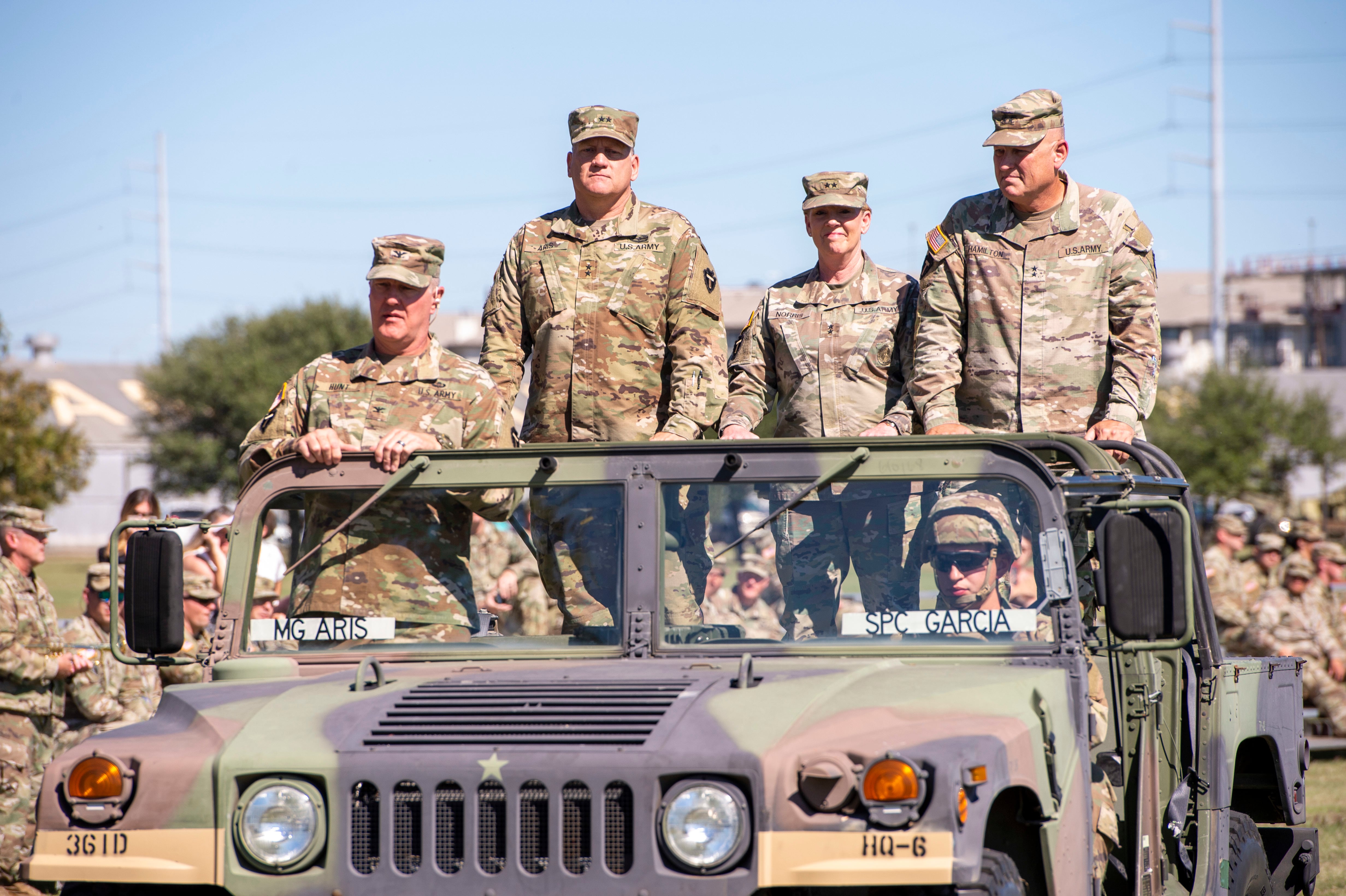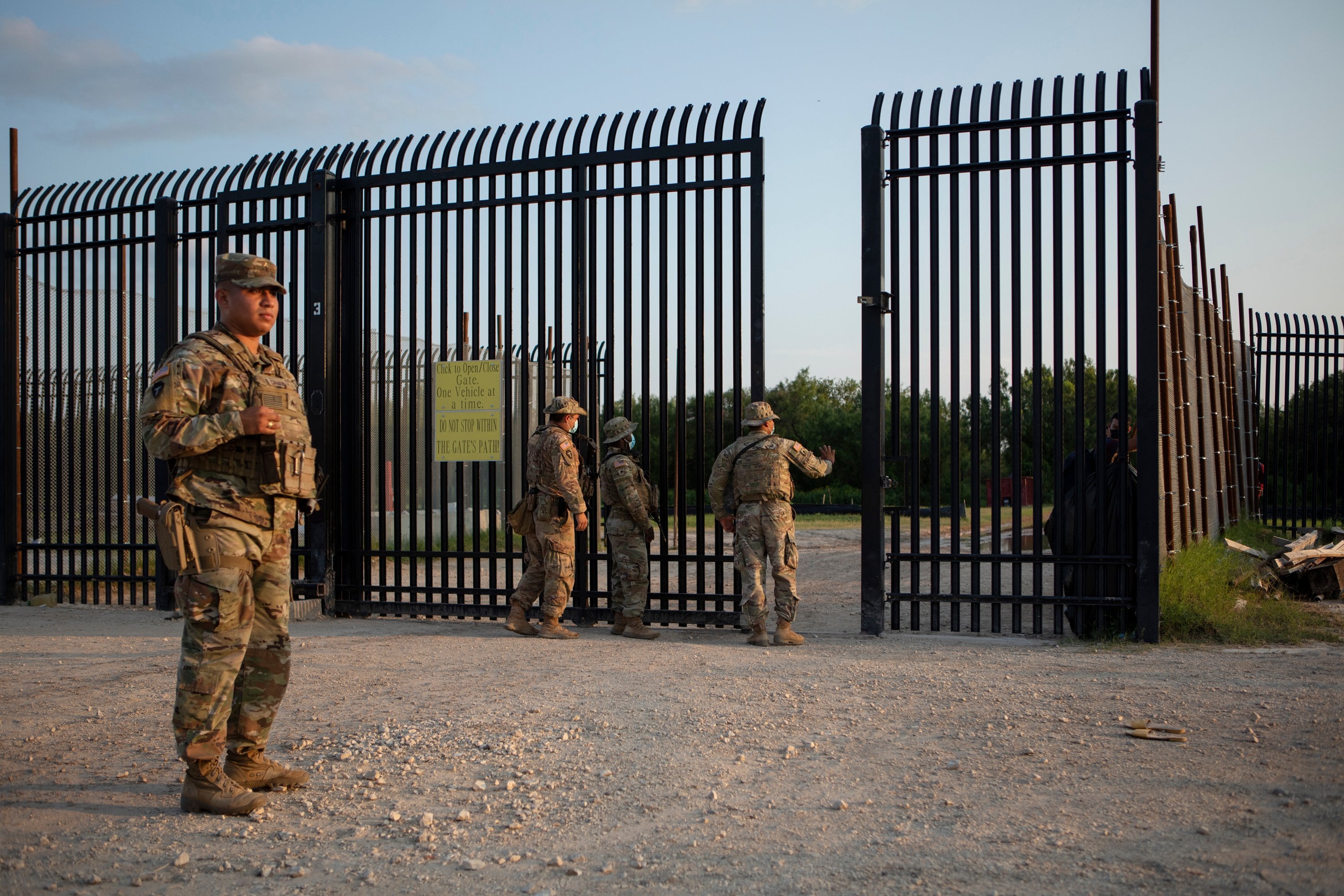This article is co-published and co-reported with the The Texas Tribune, a nonprofit newsroom that informs Texans about state policy and politics. Sign up for The Brief, its daily newsletter.
The Texas National Guard has reassigned yet another top general associated with the state’s mission to secure its border with Mexico, dubbed Operation Lone Star, Military Times and The Texas Tribune have learned.
Brig. Gen. Monie Ulis relinquished command of the task force controlling the mission to “focus solely on his [full-time] responsibilities” as the state’s deputy adjutant general overseeing its Army National Guard forces, a Texas Military Department spokesperson confirmed in an unsigned email.
Ulis had commanded Operation Lone Star’s military efforts since October, when Gov. Greg Abbott swore him into his post in a choreographed ceremony in the border town of Mission, flanked by Humvees and armed troops in body armor.
The mission’s new commander is Brig. Gen. Win Burkett, who also recently took command of the state’s 36th Infantry Division. According to the TMD spokesperson, Burkett will simultaneously command the division and the border task force.
RELATED

The move, which was directed by the state’s new top general, Air Force Maj. Gen. Thomas Suelzer, comes amid a major shift in leadership.
It began March 14 when Abbott removed Maj. Gen. Tracy Norris as the state’s adjutant general and replaced her with Suelzer.
Less than 24 hours later, Norris’ civilian chief of staff, retired Maj. Gen. James “Red” Brown, resigned.
Then on March 17, Burkett replaced Maj. Gen. Charles Aris as the top general for the 36th Infantry Division. Aris had only led the 16,000-soldier unit for five months.
The most recent move, according to the TMD spokesperson, was a “realign[ment] of leadership roles” that came as part of Suelzer’s “initial command assessment of the entire Texas Military Department.”
What’s next for Operation Lone Star?
Suelzer indicated to state lawmakers earlier this month that significant changes could be on the horizon for the border mission, which is hemorrhaging cash. Leaders have also been busy improving previous problems with pay, poor living conditions and a lack of appropriate gear due to the task force’s rapid expansion last year.
In a weeks-long span between September and October, Operation Lone Star — which began as a lean, volunteer-only effort in March 2021 — ballooned through massive involuntary activations at Abbott’s behest.
Some of the Guardsmen at the border have argued the mission was a political ploy by Abbott, a Republican seeking his third term as governor in November. A January survey completed by an Air National Guard unit deployed to the border was leaked to Military Times and The Tribune and revealed widespread discontent with the operation.
RELATED

Suelzer, who testified alongside Ulis and other military officials, told state lawmakers that he was looking at ways to make the mission “more rotational and more sustainable over time.”
It’s not clear yet whether that will mean shorter deployments or fewer troops on the mission. Right now, there are roughly 6,500 troops at the border on year-long orders, Texas Guard officials told legislators.
The TMD spokesperson said Suelzer’s “initial command assessment” remains ongoing, and “changes to [Joint Task Force-Lone Star] will be based on finding the most effective and efficient methods to fully support the requirements of [the mission].”
Finding more efficiency will be key. Military leaders told lawmakers they need a fresh $531 million in funding to keep the border mission running through the end of the state’s fiscal year in August.
Texas Tribune politics reporter James Barragán contributed to this report.
Davis Winkie covers the Army for Military Times. He studied history at Vanderbilt and UNC-Chapel Hill, and served five years in the Army Guard. His investigations earned the Society of Professional Journalists' 2023 Sunshine Award and consecutive Military Reporters and Editors honors, among others. Davis was also a 2022 Livingston Awards finalist.



